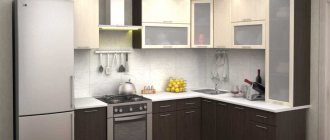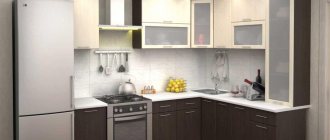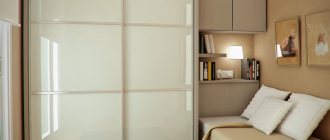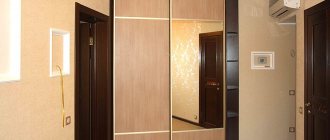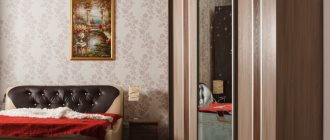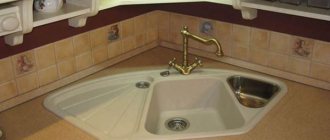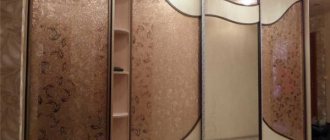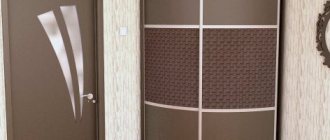Design Features
High-quality sink cabinets are a great necessity in every home. The purchase of these products must be thoughtful and balanced, because for the kitchen you need to select furniture that is optimal in size. It is also important to purchase products based on their aesthetic and decorative features.
This workplace should be very comfortable and preferably multifunctional, since the corner is a fairly large space.
When choosing, you need to consider what functions this bedside table performs:
- The practical side. Rationalization of the square footage in the room - the object takes up a minimum of free space, in addition, it houses other household appliances: a cabinet, a sink, communications, etc.
- A corner cabinet connects the kitchen unit along the walls.
- Expressiveness and aesthetics. If all the elements of the room’s style, including the sink-bedside table, are correctly selected, the kitchen will look quite representative.
- Aspect of comfortable use. If you plan the purchase and installation of the cabinet correctly, it will always be quite convenient for the housewife to use the cabinet while cooking.
A corner kitchen set is a necessary necessity: the size of the kitchen is not large enough to place everything you need along one wall.
Important. If a person wishes, he can construct the necessary sample himself, which will meet his purely personal needs.
Stylish table made of wooden slats with your own hands
This bench can serve as a coffee table, extra seating, or a place to place indoor plants. This piece of furniture will “fit” well into almost any interior!
DIY coffee table photo
Materials:
- 3 boards 2.5×7.5 cm;
- 1 board 2.5×10 cm;
- 8 boards 2.5x5 cm;
- 4 leg mounts;
- 4 conical legs 30-40 cm long (depending on the required height of the table);
- 8 screws 3.5 cm long;
- 32 wood screws with a flat head, 3 cm long;
- 16 finishing nails 3.75 cm long;
- Gorilla Glue;
- wood putties;
- primer and paint for wooden surfaces;
- sandpaper 120 and 220 grit.
Tools:
- hacksaw;
- drill and drill bits;
- Kreg set for drilling countersunk holes at an angle;
- 2 short and 2 long clamps;
- roulette;
- hammer;
- grinding machine.
Step One: Using a hacksaw, cut the ends of two 2.5 x 7.5 cm boards at a 45 degree angle. Cut out fragments from 2.5x5 cm bars, the length of which will correspond to the internal length of 2.5x7.5 cm blanks.
how to make a coffee table with your own hands. Photo
Step two: Place 2.5x5 cm of the workpiece in the middle, and 2.5x7.5 cm on the edges. Make sure the ends of the inner slats are aligned.
Step three: Measure the distance between the outermost 2.5x7.5 cm bars and cut two pieces of this length from 2.5x10 cm boards. They will serve as lower supports for the bench. Secure them by screwing self-tapping screws into each longitudinal rail.
Step Four: Using a Kreg Jig, drill two pocket holes at each end of the support crossbars. These holes will be used to connect to the 2.5 x 7.5 cm edge bars.
Tip: It is difficult to give specific recommendations regarding how far from the edge to attach a Kreg Jig. This depends on the length of the screws used, the exact thickness of the board, etc. We advise you to first practice on unnecessary scraps of boards.
unusual coffee table with your own hands. Photo
Step five: Place 2.5x7.5 cm blanks along the edges of the structure. After making sure that their ends are at the same level, secure them with clamps.
Tip: If you use soft wood (for example, pine) to make the table, place unnecessary scraps of boards under the clamp supports. Otherwise, marks from the clamps will remain on the wood.
Step Six: Securely attach the outer 2.5x7.5 cm bars to the base of the bench by screwing 3.5 cm screws into the countersunk holes that you made a little earlier at the ends of the support crossbars.
coffee table made of wood. Master Class
Step seven: Measure the width of the manufactured base to determine how long you need to cut 2.5x7.5 cm blanks for the ends of the bench. We recommend that you make a cut with a small margin in length, and then slowly grind off the excess until you achieve the perfect fit.
Step Eight: Wet the ends of all slats with water and apply a small amount of Gorilla Glue.
Step Nine: Place the end boards in their designated locations and secure the entire structure with a strap to prevent it from falling apart while the glue is wet. For reliability, you can additionally secure the ends with several finishing nails.
Step Ten: Sand the surface of the bench with 120-grit sandpaper to remove any rough edges at the joints. Fill all gaps in the seams and recesses from nail heads (the latter must be recessed into the wood) with putty. Once the putty is dry, sand the surface again, this time with 220 grit sandpaper.
Step Eleven: Paint the bench. We recommend that you sand the surface again using 400 grit sandpaper and water before painting.
Step Twelve: Install special mounting plates on the lower support crossbars to secure the legs. When attaching them, make sure that you drill holes in places where there are no screws already screwed in. The distance from the fastening to the edge of the base of the bench should be about 2.5 cm. Screw the legs themselves into the fastenings.
Varieties
If a product is in demand, it will always have many variations. Let's look at the most popular products:
- Classic L-shape. It is suitable for small spaces, so it fits into the area of most apartments of the post-Soviet period. Schematically, everything is extremely simple - the bedside table with the sink is connected by a kitchen unit, which is located in the shape of the letter “L”.
- Furniture in the shape of the letter "P". Schematically, it may be similar to the L-arrangement. It’s just that now the set is longer, the furniture runs in straight lines along the entire perimeter of the kitchen, near the walls.
- Trapezoid bedside table. Quite a functional option, which entails a higher cost compared to previous products.
- Sink with beveled corners. Interesting design idea. Looks great and modern in a modern kitchen.
Note. Sink cabinets can also be classified according to the material they are made of. For example, from wood, possibly from rare species, or a cheaper and more practical option - from chipboards or wood-fiber material.
Product dimensions and shape
Cabinets come in different shapes, and their dimensions depend on this. The size of the cabinet is determined by the type of sink that is installed in it. To select the appropriate cabinet size, you must consider the following parameters:
- Room area. If the kitchen is small, then the appropriate width for such furniture will be 45 cm. In small kitchens, you should not make the cabinet too deep so as not to take up space, so 45-50 cm depth will be the most relevant. The height of the furniture is selected based on the height of the user, most often it is up to 90 cm.
- Built-in set of equipment. If you plan to fit equipment under the sink, then when taking into account the dimensions of the cabinet, they start from its parameters. Let's say dishwashers are 45-60 cm wide, the dimensions of the cabinet should be a little wider to leave room for installation.
- Sink size. The sink can be round, oval or square. Based on this, the width of the cabinet frame is selected.
Tips for choosing
Interior design is a delicate matter. Every housewife dreams of arranging her living space, while choosing the right furniture to match the interior of the room itself. As for the kitchen cabinet, it should also be functional, in addition to aesthetic aspects. How to choose the right product?
The corner cabinet under the sink plays a connecting function between the cabinets on two walls.
To do this, you must follow the following recommendations:
- The design of the room, as a rule, will tell you which sink you should purchase. Of course, choose options that will fit into the style of a separate room or the entire apartment.
- Another important factor in the choice is the material from which the products are made. Always give your vote to eco-friendly products.
- You should pay attention to reliability and practicality, reviews for specific models. Find out how durable a pressure washer is.
- To what extent does this design suit the owners? The psychological factor plays a huge role. The most trendy products will not be desirable if the consumer had prejudices towards them from the very beginning.
A corner kitchen cabinet is much larger than its straight counterparts and, accordingly, will accommodate a larger number of kitchen utensils.
Additional Information. The sink cabinet should concentrate two main features: beauty and functionality.
Choosing a sink and countertop
Having decided on the cabinet and its characteristics, you can choose a sink, which also comes in all sorts of shapes, sizes and types.
It is worth noting that in some cases experts advise purchasing a sink first. The product can be made of stainless steel, artificial stone, ceramics
In appearance, the sink can be:
- Rectangular - emphasizes the strict lines of the headset.
- Oval - a non-standard shape is combined only with a similar interior.
- Square - optimal for a small cabinet.
- Round is a universal shape that is suitable for any kitchen design.
Some sets may have an asymmetrical kitchen sink. Such options are not always practical, although they certainly look original. The optimal size for a sink used by a small family is 45 cm in width or diameter. If you have to cook a lot and wash a lot of dishes, you should give preference to wider and deeper options.
Depending on the type of installation, the sink can be:
- Mortise - installed in a hole of identical size cut in the countertop.
- Overlay - mounted on top of the cabinet, and the sink must exactly match the length and width of the furniture.
- Under-table - unlike previous types, the product is installed not on top, but below the tabletop.
The mortise model is most often mounted on countertops made of chipboard or MDF. Overlays and under-tables are often combined with artificial stone. The same material is indispensable if it is partially used as a work surface. Due to its high strength, it is resistant to mechanical stress. Countertops made of natural stone are rarely made, not only because of the high cost, but also because of their heavy weight
RectangularOval
SquareRound
MortiseInvoice
Podstolnaya
Wooden countertopArtificial stone surface
How to make a corner cabinet yourself
The kitchen is probably the favorite place to spend time for both adults and children. It’s so nice to have dinner with your family, gossip or just sit with a cup of coffee. Therefore, everything on it should be perfect (in the opinion of specific owners). If you cannot find a suitable design, it can be made. This is also possible with a sink cabinet.
This place is almost always used for installing a sink, which means that a siphon, pipes, and technical communications will be hidden in the cabinet.
First of all, you need to decide:
- what type of product needs to be invented, its dimensions;
- view and familiarize yourself with information on this issue, be sure to study photo and video materials;
- calculate estimates for materials, tools, etc.
Important! In most cases, making it yourself is much cheaper than buying it in a store.
If the preparatory stage is completed, you can begin the actual work. It’s better to start with the classic version, simpler, but also the most popular - L-shaped.
In stores you can most often buy a kitchen set with an L-shaped corner sink or with a trapezoidal cabinet under the sink.
Drawing and dimensions
The initial stage of work is to decide on the size of the corner cabinet for the kitchen sink. To do this, you first need to take appropriate measurements of the room and draw a diagram of the project.
The back part for a trapezoidal bedside table is formed according to the same principle as for a rectangular one, otherwise the schematic drawing looks like this.
In the drawing, it is necessary to take into account communications at the site, whether other elements of furniture or equipment will be located near the sink. As a rule, the drawing can first be made on a simple squared piece of paper from a notebook. Modern technologies make it possible to subsequently create a three-dimensional project on a computer, etc. The scheme should include:
- View of the structure from all angles. From the side, from above.
- It is imperative to detail the drawing, down to the smallest samples. If this is a classic, then highlight the dimensions of the right and left cabinets (which are located near the sink), indicate the horizontal connection of these objects (front side) and all subsequent connecting strips.
- Clearly design parts of the frame, walls, back and floor coverings, facade, etc.
- It is necessary to thoroughly consider the placement of shelves and doors.
The drawing with one blank wall is relevant when supplying communications from the side.
The entire kitchen layout must fit into the overall interior of the kitchen unit.
Selection of tools and materials
Let's dwell on the materials from which it is possible to make a good bedside table. First, pay attention to the old furniture; some parts can be used to build a good sink. If you start work from scratch, you will need chipboard or MDF, as well as plywood. The entire product can be made exclusively from wood; sometimes folk craftsmen design excellent wooden objects, and even in a single copy.
A popular material for inexpensive furniture. The service life will largely depend on the finishing method.
Of the tools that are needed for the project, most are available from good owners, and if not, then you will have to purchase it, which will be a good investment for the future - the ability to produce similar crafts at any time. The necessary accessories and tools are as follows:
- roulette;
- pencil;
- hacksaw;
- screw tie;
- screwdrivers are different;
- priming;
- protective devices;
- cutter;
- drill;
- screwdriver;
- level;
- plane;
- jigsaw;
- nails, screws and self-tapping screws;
- hinges, handles, etc.
A good craftsman knows how to replace a tool he doesn’t have, or how to do without it.
Assembling the cabinet
Before starting the main work, you need to prepare the walls that will be behind the sink. They should be even. If the owners wish, they are covered with wallpaper or treated with appropriate materials. Start of assembly:
- divide all materials according to the drawing;
- varnish the surface of the samples;
- we fasten the fittings, check the façade parts (how well they correspond to the design);
- we assemble the main countertop, mark where the sink and cabinets will be located, and make the corresponding holes;
- we install upper and lower cabinets;
- We install the tabletop canvas.
All that remains is to screw the countertop, cut in the sink, put the structure in place and connect it to the sides of the set.
This is only a complex process at first glance, but if you plan your actions, a person with minimal knowledge of carpentry can build good furniture.
A large pentagonal-shaped cabinet, the front part of which has a beveled edge that overlaps the rectangular junction of the side modules.
Final stage
The final touch is the assembly of the facade parts, which must be done in advance and tried on during the installation of the main part. The doors are attached to pre-installed hinges. If necessary, handles are fixed (if they were not installed immediately).
Such solutions are characterized by greater capacity and provide convenient access to the internal contents.
Façade details are the part of the structure that will be most exposed. It will also be used quite often by all family members. Therefore, you need to select high-quality materials.
Either a mortise or overhead sink with one or two sinks and additional space for drying dishes can be installed on top of the base.
Note. It is necessary to do everything according to the previously developed scheme, and there will be no problems in the work. If a craftsman likes his craft, he can continue, the sink will become the starting point in the manufacture of the entire kitchen set.
Instructions for making a sink cabinet
The most suitable for home production are straight and corner trapezoidal sinks made of chipboard . You will need a minimum of tools and some assembly experience.
Straight cabinet
The manufacturing technology consists of several successive stages.
Structural elements are prepared : sidewalls, bottom plate, doors. The configuration is marked on a sheet of chipboard and cut out.
Straight cuts are best made with a circular saw. When using a jigsaw, be sure to use a stop to ensure an even cut. A hand saw is the worst option, as chips are sure to form.
When constructing, the communications line is taken into account. The back wall is usually not made blank, but a narrow partition is screwed in for structural strength.
The parts of the cabinet are fastened to each other using euroscrews, ties or corners.
In the first case, you will need drills with a diameter of 4 and 6 mm. It is convenient to use factory equipment, which in one pass prepares a place for the screw part and the fastener head.
For mounting on screeds, you will need a Forstner drill to make a place for the eccentric. This connection is most often used to attach shelves. It is more technologically advanced to use Euroscrews to assemble the walls and bottom.
Corner joints are less reliable, since the fastenings gradually become loose if the cabinet under the sink has gaps with the wall and other furniture.
Doors are hung on mortise or overhead hinges. In the first case, you need a Forstner drill of the required diameter to make the seat. To install overhead models, you only need self-tapping screws 15 mm long. After preliminary installation, it is better to remove the doors.
Valera
The voice of the construction guru
Ask a Question
Mortise hinges allow you to adjust the doors in different positions - vertical, horizontal and increase or decrease the distance between the door and the wall. The overhead hinges are practically impossible to adjust, which is done by unscrewing the screws, adjusting the position, and then tightening the fasteners.
Adjusting the doors is the last stage of installation.
Features of corner structures
Fundamentally, the technology and assembly sequence of corner and straight models are no different. There are some features that are taken into account when designing and manufacturing:
- Design begins with modeling the tabletop , since it will have to be shaped into an angle. The remaining distance is not always enough to install the sink.
- Sinks are chosen smaller or have a wide countertop . If the desired option is not on sale, the upper part is made of two strips. In this case, a podium is often made to make the sink more convenient to use.
- The cabinet will require more materials and careful calculations of the dimensions of the parts.
It is better to take drawings of corner options on the Internet, since it is difficult to design such furniture yourself without the skills.
Where can I put it?
The location of the sink cabinet is a very important aspect in the interior design of the room. You can install this design:
- Near the gas stove. This is the most popular option. Since all the equipment is at hand, cooking happens much faster. But it’s unpleasant when detergent from the sink gets into your food. So, such proximity has its negative aspects.
- Corner or classic placement. This location is the most acceptable saving of square meters in a small space.
- Bedside table by the window. An interesting approach for those who like to see nature or city life from the window while cooking. Don't forget that washing windows will be twice as dirty.
- In the middle of the kitchen (also called an island). In most cases, such a cabinet is also a dining table. Unusual layout, somewhat reminiscent of a restaurant style. Remember that with this design, the water pipes will have to be adjusted to the sink.
Small corner kitchens interior design
When choosing the design of an L-shaped kitchen, you should first of all take into account its size. A lot depends on him
The most common style for small rooms is modern
It allows you to combine different materials and textures, colors and shades. It is with the help of modernism that you can visually enlarge the space, for example, using glass and mirrors, or color accents that will help zone it
The most common style for small rooms is considered modern. It allows you to combine different materials and textures, colors and shades. It is with the help of modernism that you can visually enlarge the space, for example, using glass and mirrors, or color accents that will help zone it.
It is better to decide on the dimensions of the corner module at the very beginning, at the stage of designing the headset.
Objects made from materials with a voluminous pattern or texture are considered undesirable for small kitchens. They should not “put pressure” on the space, but, on the contrary, make it freer.
Whatever the style of a small corner kitchen, the main thing is that there are no frills. After all, they are the ones who can turn a stylish and atmospheric room into a cluttered room.
Methods for installing a corner kitchen sink
Most modern people with simple knowledge can install this object:
- we fasten the side parts with the bottom part;
- installation of a corner structure;
- we fasten the connecting components;
- installation of legs (if provided);
- We install doors and handles.
At the location of the washing unit, all communications necessary for its functioning are located.
Additional Information. When purchasing any furniture, a diagram is included, with which installation is quite simple. There are two installation methods: mortise and overhead.
Distinctive features of corner furniture
The standards that are used in the process of making kitchen furniture with your own hands are directly dependent on the parameters that affect the size of the assembled cabinet.
The lower corner cabinet has the following main parameters:
The width of the base is usually 100-120 mm
If you are going to install a sink in it, it should be slightly lower in height than the cabinets that serve as a work area. This will make washing dishes more convenient and comfortable. The difference in tabletop heights ranges from 20 to 40 mm. The exact value is determined by the applicable materials and their texture. The standard height of finished furniture is approximately 0.85 m. If you are planning to install a wall-mounted corner cabinet, then know that its height of 0.7 m is most suitable for those people who are of average height.
In addition to certain dimensions, you need to decide what kind of configuration your corner kitchen cabinet will have. The following types of configurations are distinguished:
- cabinets in the shape of the letter “L”;
- modular cabinets;
- trapezoidal cabinets.
L-shaped cabinets are the most popular because they are very convenient. The cabinet doors open according to the trolleybus principle, so the interior contents of the cabinet are clearly visible and convenient to use. It would be advisable to equip such a cabinet with special carousel shelves that can rotate at a maximum angle.
Figure 2: The corner trapezoidal unit creates ample storage space.
Arranging a cabinet of this type will help save a lot of space. In this design you can successfully place a sink for washing dishes. This couldn’t come at a better time, because in apartment buildings built in the Soviet era, the water pipes run right in the corner. For this reason, in order to avoid lengthening communications, it is very convenient to install the sink in the corner (Fig. 1).
The attached corner cabinet consists of 2 modules: a cabinet installed in the corner of the kitchen, and another cabinet with a door placed at a right angle to the cabinet. This design is not entirely convenient, since free access is provided only to the contents of the cabinet with the door.
Cabinets of this configuration can also accommodate a sink. In this case, it is better to hide the plumbing in a remote part, and arrange drawers for dishes, household chemicals, etc. in an accessible module.
The modular design of a kitchen corner cabinet has a big drawback: the blind part is difficult to access. If there is a need to repair plumbing, it will be a difficult task if it is located in a blind module. If you place the pipes in the accessible half, the blind half will be empty.
Using a carousel for a corner cabinet makes it easier to reach even the furthest corners.
A compromise is possible - install a corner modular cabinet in the corner opposite the sink and use it to store various kitchen utensils. You can not install doors on it and install a microwave or build a minibar in it.
The corner cabinet, shaped like a trapezoid, is equipped with one door. On the periphery of the cabinet you can install other elements of kitchen furniture. The trapezoid cabinet looks extraordinary and looks good in large kitchens (Figure 2).
But there are some disadvantages to using a trapezoidal kitchen cabinet:
- A straight door blocks the area near the wall. Therefore, it is best to use such furniture to accommodate a microwave, food processor and other household appliances.
- If you install a carousel in your cabinet and install a sink in it, you may increase the likelihood of plumbing failures. The steel carousel will continuously deform the siphon due to continuous friction.
Organization of space inside
How you can organize your interior space:
- Using a basket (mesh). All contents are clearly visible during operation.
- Lockers. You can separate some kitchen utensils and household chemicals on all shelves.
- Pull-out drawers. This is the most practical method for storing dishes.
- Pull-out (regular) trash can (or any container). Basically, consumers use the space under the sink this way.
- Mini pantry. We install small shelves, and we get a pantry for storing food that does not spoil for a long time.
A floor-mounted corner cabinet will help you make better use of your kitchen space, making it functional and cozy.
When choosing a suitable design, the main thing is that the kitchen furniture: be stable along with the sink, hide the main communications on the site, have a spacious cabinet and other characteristic features.
Kinds
Choosing a kitchen set is a responsible thing. Before you take action, you should study all the varieties. Select the desired type of configuration based on the dimensions of your kitchen. Manufacturers offer a fairly wide range of sinks with different cabinets. There are two main types of cabinet configurations:
Straight
Straight cabinets are relevant if the sink is located somewhere along the wall, between other pieces of furniture. The blind area of such a cabinet is quite difficult to access, which reduces the popularity of this configuration.
Corner
Corner furniture can be L-shaped or trapezoidal. The first type of sink cabinet does not have a back wall. Instead, there are additional transverse webs to strengthen the structure. The interior space of such a cabinet is clearly visible.
A trapezoidal set is often used for installing sinks with two sections. If you use a compact siphon, then there is a lot of usable space inside the cabinet. You can install carousel shelves there. It is worth noting that radius cabinets have recently appeared. This type of cabinet is located in a corner, but has a concave front.
There are different types of doors for kitchen vanity cabinets:
- Two doors. This option is quite familiar and can be used with cabinets of any configuration.
- One door. If your cabinet is small in size, feel free to use this option. But for a large cabinet this is extremely inconvenient.
- Double door on hinges. The two doors are connected by hinges and open sequentially. Such doors are convenient for corner cabinets.
- Sliding. This opening and closing method is well suited for small-sized furniture. But, in general, the option is not very convenient.
- Drawers. They are found in straight configuration boxes. Be sure to provide recesses for pipes and hidden parts of the sink.
- Combined. This option is quite common in our kitchens. A combination of conventional folding doors with drawers.
The main range of sink cabinets only have doors. But there are designs with drawers. These boxes are fixed on roller tables and have a specific shape with recesses for pipes. This design option eats up a little space under the sink, but makes it possible to organize the storage of detergents, sponges and rags. This is a suitable option if you already have enough different cabinets.
The inside of the sink with the cabinet itself may be completely empty; there may simply be hidden parts of the washbasin and pipes. More often, people place various drawers, shelves or baskets in this niche. You can place a small organizer on the closet door itself. Some people use this space to even greater advantage and store mechanisms there for filtering or heating water. In addition, you can put a tray inside for various kitchen accessories.
Sinks with cabinets also differ in size. For narrow sinks, choose cabinets of 40 cm. The size of 50 cm is an option for sinks of non-standard dimensions. But owners of wide sinks need a width of about 60 cm. Double sinks are now in fashion, cabinets 80 cm or more are ideal for them. Choose a sink cabinet so that the sink fits tightly on top.
Detailing and fittings
Let's imagine that the dimensions of your cabinet should be 600x700x300 mm. You take and order parts 600 mm wide, 700 mm high and 300 mm deep, and then try to fit them. Naturally, you won’t get anything good out of it, because you don’t take into account the thickness of the part and how these parts will be joined together and located in the finished product. This is exactly why it is necessary to do detailing - dividing the finished product into its individual components.
Before I move on to the large table with ready-made parts for my kitchen, I’ll explain a few more points about what comes from where and how.
Height of the floor row cabinet. The recommended standard height of the floor row is 860 mm. The thickness of the tabletop is usually 28 or 38 mm (mine is 38 mm). The height of the decorative legs is from 70 mm and above (I have 100 mm). So it turns out that the height of the cabinet (the box itself) in my case is equal to: 860 –38 – 100 = 722 mm. For the convenience of further calculations, I simply took 720 mm.
Drawers can be of several types:
- The drawer box is assembled from the same material as the rest of the kitchen (chipboard) and is mounted on roller or telescopic guides. As they say - cheap and cheerful.
Tandemboxes
- Metaboxes, tandemboxes, etc. In fact, these are ready-made boxes with fastening and adjustment systems, for which you just need to adjust the bottom and back wall (cut from chipboard). These systems are not cheap, but they are simple and easy to install. Plus they look very solid. Each manufacturer has schemes for calculating installation dimensions, additives and installation of their tandem boxes. Be sure to download them from the Internet, or take them from sellers, study them and start detailing.
Diagram and installation dimensions of the Boyard tandembox
Diagram and installation dimensions of the Boyard tandembox
Gas elevators and Aventos are mounted on top row cabinets and are designed to open and hold facades suspended. At a construction market or in a store, the seller will advise you about these things; you just need to tell us the material and dimensions of the facade that needs to be opened/held.
So, I present once again the kitchen diagram and the detailing that I ended up with.
Sink installation
When the frame for the kitchen sink is made with your own hands, the sink is installed. Installation options will depend on the design features of the sink. The standard version is fixed in two ways:
The first option is only suitable if the sink is light. When the structure is heavy, it is necessary to use self-tapping screws. Otherwise, the sink may fall. Before installation on the sealant, all ends of the cabinet are coated with a connecting mixture. Then install the shell and press on it for better adhesion.
To mount the sink on self-tapping screws, buy special L-shaped fasteners. In total you will need 4-5 pieces. They are screwed at the same height from the inside of the cabinet. For accuracy, it is advisable to use a building level. To protect the cabinet material from moisture, the ends are lubricated with sealant, and a sink is installed on top. The fasteners are placed on self-tapping screws and moved along the slot. This presses the sink against the cabinet.
Initial data
So, what did I have at the start of this whole event? A kitchen with an area of 6.2 m2 (according to the technical passport), which has not had any, not even cosmetic, repairs done for many years. The kitchen set has generally been like this since the time the house was commissioned, and this is already almost 40 years. The window frame is old, wooden. The refrigerator is old and needs replacing. The gas stove is relatively new, but does not meet the wife’s requirements.
In general, of what was supposed to be taken from the old kitchen and transferred to the new one, only the microwave and the washing machine mentioned in the prologue remained.
It only remains to add that the old layout of the kitchen and the arrangement of all the elements on it always seemed terribly inconvenient to me, not practical and not rational, and therefore I began to fight for every centimeter, for every piece of free space, and, looking ahead, I want to admit, that I succeeded.
Size calculation
To choose a vanity unit, you need to consider several factors, including:
- features of the kitchen - its area and layout;
- features of the sink - shape, size and even installation method;
- what will be stored inside, and how often you need to get into it.
The standard sizes for each type of cabinet were described above, but you can create anything you want individually. Today, designers are trying to deviate from standards and create individual solutions, since they are the most comfortable and optimized.
For example, for a long time the standard tabletop height was considered to be 85 cm, and the adjustment was a maximum of a couple of centimeters to adjust the set to uneven floors.
Now you can adjust the height by 10 cm or even more to make your stay in the kitchen as comfortable as possible. There is even a small but visual drawing telling you what height of a kitchen unit with a sink in the corner is suitable for what height.
The standard width of the door (not transformer) of a corner bedside table is 40 cm. You can make it 30 cm, but this will significantly reduce access to the space and stored products. Is it worth it?
Of course, you cannot choose a built-in sink larger than the countertop. You have to monitor both the length and depth of the product. Most kitchen sinks are designed to fit into a 60cm deep worktop, with the sink itself only taking up 48-50cm of this space as clearances need to be provided.
